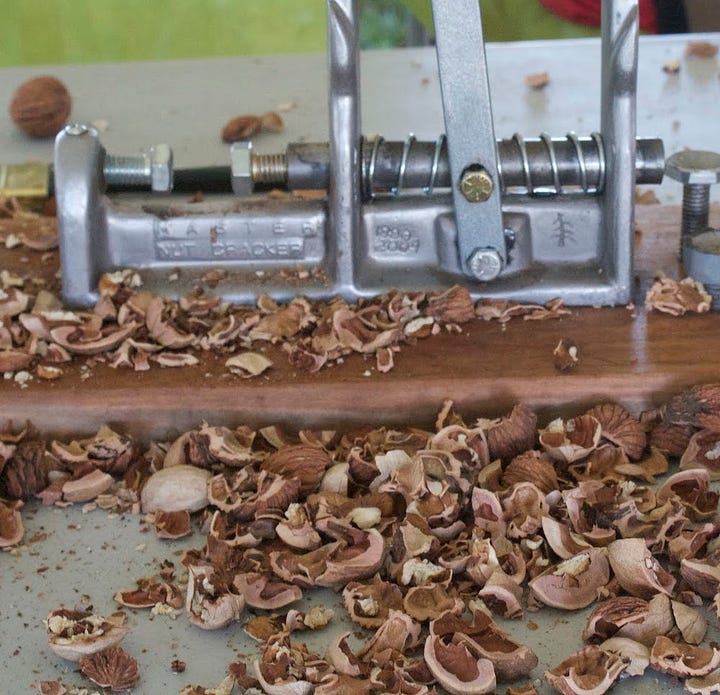Foraging Guide: Walnuts
A-tisket, a-tasket, find these walnuts for your basket.
Fruit trees have had their spotlight earlier in the year, though with summer departure, it’s the nut-producing trees that shine brightest come autumn. Grab your foraging basket — or rather several buckets — because walnuts are both in-season and plentiful.


When to hunt: Autumn through early winter
Black walnut trees (Juglans nigra) can start dropping their season’s harvest as early as mid-September in some regions; for me here in Missouri, I tend to find them littering my driveway around mid-October. The hulls don’t fall all at once, but over the course of several weeks, and the season can continue through December.
How to harvest: The trees willingly giveth
Walnuts are easy to harvest because the trees tend to do most of the work. As they ripen, the hulls detach from the tree, and you’ll find them easily collectible below. You can shake smaller trees to drop more nuts, but lookout below, because these hefty pods can do some damage. The hulls — aka the exterior shell that protects the actual walnut — have a gritty texture and start off with a lime-green hue, transitioning to a nearly black shade the older they get. I find that walnuts harvested earlier in the season while the hulls are still green have better flavor than nuts collected later in the year.
Foraging notes you should know
I’m warning you: be careful what you wear when working with walnuts. These forageable foods produce a substance called juglone within its husk that can stain hands and clothing (some people even find it irritating or blistering to their skin). Skin staining can take days or weeks to disappear, and I have had clothing permanently discolored. However, if you partake in the fiber arts (hello fellow knitters, weavers, and fabric hoarders!), you can repurpose this ink to make your own natural dye.
Walnuts are also notoriously difficult to crack. Some foragers dump their finds in the driveway and roll over the hulls with their cars; other people use a hammer (my children find this exciting, but it is messy and wild). Despite the tough work, removing the walnuts from their exterior shell is essential for actually eating them. Once they’re broken free, the nuts need a little storage time before they’re ready to eat; some experts recommend letting them air-dry for about a month. Which means if you get started now, there’s a good chance you’ll be able to add fresh walnuts to your Thanksgiving or winter holiday baking.


